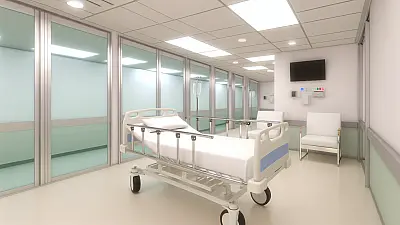DORCHESTER, MA - State health inspectors found that The Bostonian Nursing Care & Rehabilitation Center failed to ensure a required safety device was properly maintained for a resident at high risk of wandering away from the facility, according to an inspection conducted on May 29, 2025.

Missing Safety Device Creates Risk for Vulnerable Resident
The facility's failure centered on Resident #62, who had been formally assessed as having a high risk of elopement - the medical term for when confused or disoriented residents leave a care facility without supervision. Despite physician orders requiring the resident to wear a Wanderguard device on their ankle, inspectors discovered the critical safety equipment was missing entirely.
The Wanderguard system functions as an electronic monitoring device that alerts staff when residents approach exit doors. For residents with cognitive impairments who may not understand the dangers of leaving the facility unattended, these devices serve as an essential safety measure. The technology has become standard practice in memory care units nationwide, particularly for residents who exhibit frequent wandering behaviors.
During the inspection, when Unit Manager #1 and the surveyor checked on the resident, they found them sitting barefoot in bed with no Wanderguard visible on either ankle. A subsequent search of the resident's room failed to locate the missing device. The Unit Manager stated that "if staff noticed Resident #62 not wearing a Wanderguard she would expect to be notified," yet no such notification had occurred.
Documentation Confirms High Elopement Risk
Medical records reviewed during the inspection painted a clear picture of the resident's vulnerability. An Elopement Risk Assessment Form dated April 14, 2025, showed the resident scored 16 on the evaluation scale - significantly above the threshold of 10 that indicates high risk for wandering. This assessment uses standardized criteria to evaluate factors such as cognitive function, mobility, and past wandering attempts.
The resident's care plan, initially developed in October 2023, specifically identified them as "an elopement risk/wanderer" and mandated the use of a Wanderguard device. Additionally, physician's orders from November 2024 explicitly required the device to be worn on the right ankle, with instructions for staff to check its function daily during every shift and replace the bracelet according to the expiration date printed on the device.
Social Worker #1 confirmed during an interview that "Resident #62 wanders up and down the hallway all the time," underscoring the ongoing nature of the wandering behavior and the critical need for continuous monitoring.
Medical Implications of Elopement Prevention Failures
When facilities fail to maintain proper elopement prevention measures, residents face substantial risks. Confused or disoriented individuals who leave a facility unsupervised may encounter traffic hazards, extreme weather conditions, or become lost and unable to find their way back. Studies indicate that residents who elope from care facilities face risks of injury, dehydration, hypothermia, and in severe cases, death.
The absence of functioning elopement prevention systems represents a breakdown in multiple safety protocols. Daily checks specified in the physician's orders serve to ensure devices remain properly positioned, functioning, and within their operational dates. These routine verifications help identify issues before they become critical safety gaps.
Industry standards dictate that facilities must implement comprehensive elopement prevention programs that include both technological solutions like Wanderguard systems and staff training on recognizing wandering behaviors. When a device goes missing, immediate action should include notifying supervisors, conducting searches, and implementing alternative monitoring methods until the device can be replaced.
Systemic Oversight Concerns
The Director of Nursing acknowledged that "Resident #62 should have been wearing a Wanderguard per the physician's orders," confirming that facility leadership understood the requirement but failed to ensure compliance. This gap between documented care requirements and actual practice suggests potential systemic issues with monitoring and accountability.
The violation, while classified as causing minimal harm or potential for actual harm and affecting few residents, highlights fundamental weaknesses in the facility's safety protocols. The failure to maintain, monitor, and immediately address the absence of a critical safety device indicates breakdowns at multiple levels - from direct care staff who should have noticed the missing device during daily care, to supervisory staff responsible for ensuring physician orders are followed, to administrative systems that should track and maintain safety equipment.
Full Inspection Report
The details above represent a summary of key findings. View the complete inspection report for Bostonian Nursing Care & Rehabilitation Ctr, The from 2025-05-29 including all violations, facility responses, and corrective action plans.
💬 Join the Discussion
Comments are moderated. Please keep discussions respectful and relevant to nursing home care quality.